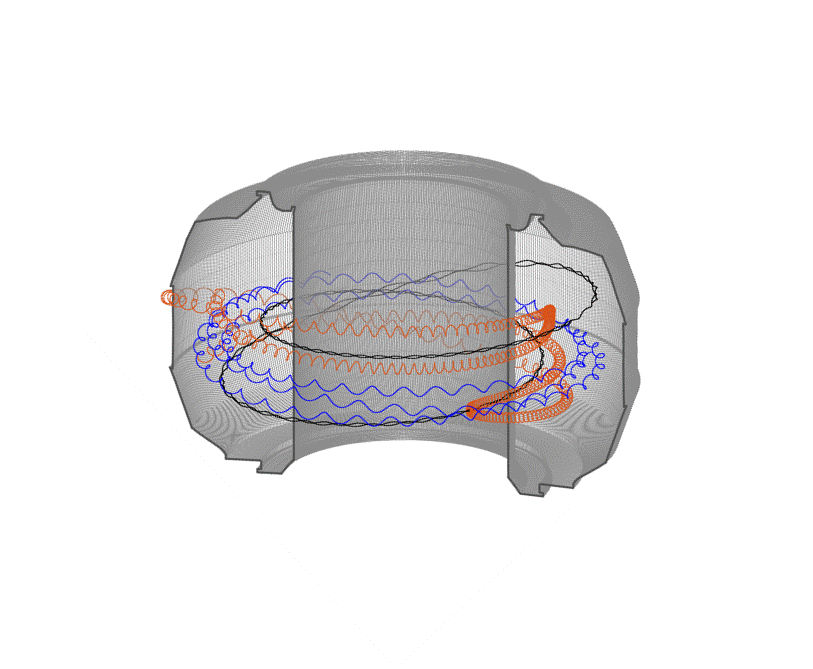
Filter News
Area of Research
News Type
News Topics
- (-) Composites (17)
- (-) Frontier (25)
- (-) Fusion (40)
- (-) Mercury (10)
- (-) Physics (33)
- (-) Security (12)
- (-) Statistics (2)
- 3-D Printing/Advanced Manufacturing (72)
- Advanced Reactors (21)
- Artificial Intelligence (61)
- Big Data (43)
- Bioenergy (67)
- Biology (78)
- Biomedical (40)
- Biotechnology (14)
- Buildings (38)
- Chemical Sciences (35)
- Clean Water (27)
- Climate Change (72)
- Computer Science (126)
- Coronavirus (28)
- Critical Materials (15)
- Cybersecurity (17)
- Decarbonization (55)
- Education (1)
- Emergency (2)
- Energy Storage (60)
- Environment (147)
- Exascale Computing (27)
- Fossil Energy (5)
- Grid (46)
- High-Performance Computing (55)
- Hydropower (11)
- Irradiation (2)
- Isotopes (32)
- ITER (5)
- Machine Learning (33)
- Materials (78)
- Materials Science (79)
- Mathematics (9)
- Microelectronics (2)
- Microscopy (31)
- Molten Salt (6)
- Nanotechnology (28)
- National Security (42)
- Net Zero (10)
- Neutron Science (74)
- Nuclear Energy (74)
- Partnerships (19)
- Polymers (17)
- Quantum Computing (25)
- Quantum Science (40)
- Renewable Energy (1)
- Simulation (39)
- Software (1)
- Space Exploration (22)
- Summit (36)
- Sustainable Energy (92)
- Transformational Challenge Reactor (3)
- Transportation (62)
Media Contacts

Carbon fiber composites—lightweight and strong—are great structural materials for automobiles, aircraft and other transportation vehicles. They consist of a polymer matrix, such as epoxy, into which reinforcing carbon fibers have been embedded. Because of differences in the mecha...
Physicists turned to the “doubly magic” tin isotope Sn-132, colliding it with a target at Oak Ridge National Laboratory to assess its properties as it lost a neutron to become Sn-131.

Biologists from Oak Ridge National Laboratory and the Smithsonian Environmental Research Center have confirmed that microorganisms called methanogens can transform mercury into the neurotoxin methylmercury with varying efficiency across species.

As technology continues to evolve, cybersecurity threats do as well. To better safeguard digital information, a team of researchers at the US Department of Energy’s (DOE’s) Oak Ridge National Laboratory (ORNL) has developed Akatosh, a security analysis tool that works in conjunctio...

Fusion scientists from Oak Ridge National Laboratory are studying the behavior of high-energy electrons when the plasma that generates nuclear fusion energy suddenly cools during a magnetic disruption. Fusion energy is created when hydrogen isotopes are heated to millions of degrees...

As leader of the RF, Communications, and Cyber-Physical Security Group at Oak Ridge National Laboratory, Kerekes heads an accelerated lab-directed research program to build virtual models of critical infrastructure systems like the power grid that can be used to develop ways to detect and repel cyber-intrusion and to make the network resilient when disruption occurs.

Nuclear physicists are using the nation’s most powerful supercomputer, Titan, at the Oak Ridge Leadership Computing Facility to study particle interactions important to energy production in the Sun and stars and to propel the search for new physics discoveries Direct calculatio...

The same fusion reactions that power the sun also occur inside a tokamak, a device that uses magnetic fields to confine and control plasmas of 100-plus million degrees. Under extreme temperatures and pressure, hydrogen atoms can fuse together, creating new helium atoms and simulta...

A new manufacturing method created by Oak Ridge National Laboratory and Rice University combines 3D printing with traditional casting to produce damage-tolerant components composed of multiple materials. Composite components made by pouring an aluminum alloy over a printed steel lattice showed an order of magnitude greater damage tolerance than aluminum alone.

An Oak Ridge National Laboratory study is providing an unprecedented watershed-scale understanding of mercury in soils and sediments. Researchers focused on evaluating mercury and soil properties along the banks of a mercury-contaminated stream in Oak Ridge, Tenn., sampling 145 loca...


